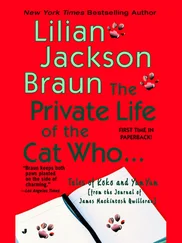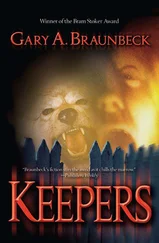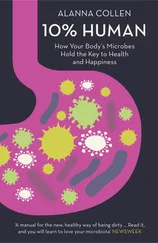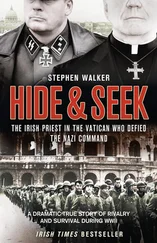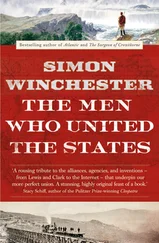Fear is the Key:
An Introduction of Sorts
by
Gary A. Braunbeck
A very good friend of mine (and brilliant writer of award-winning poetry, as well as a Bram Stoker Award-winning editor) Christopher Conlon once pointed out to me the difference between a “literary collection” and a “genre collection” – and it has to do with things like Introductions. A Literary collection will have a single Introduction, usually written by someone not the author who is also a well-known name in the field – like, say, Paul Auster writing the Introduction to Amy Hempel’s next collection.
A Genre collection not only has said Introduction (usually written by the author him- or herself), but it will also have an Introduction to each story, or an Afterword, or something called “Story Notes” tacked on at the end – all this effort so that the reader will find the genesis of every single story in the book as endlessly fascinating as the author her- or himself finds it. It usually comes off as one of two things: rampant egotism/narcissism, or ponderous navel-gazing.
Personally, I like “Story Notes” or Introductions to each story, or an Afterward, because I am interested in how other writers’ thought processes work (I say “thought” and not “creative” because, let’s face it, before you can get creative, you first must have a thought which a solid piece of fiction can use as its base). I also like Literary Introductions, for the same reason; if the author of said Introduction is another author, it’s twice as interesting for me, because what you get is an interpretation of the pieces you’re about to read, only these are filtered through the sensibilities of someone who’s only read the stories, not the person who actually wrote the bloody things.
This is my way of telling you: if you’re looking for Introductions, Afterword, or “Story Notes” for the novellas in this collection, this Introduction is all you’re going to get. I am of the opinion that the stories speak well enough for themselves.
I did, however, want to comment on the title of this collection: Cages and Those Who Hold the Keys. It was the first thing that popped into my head when publisher Steve Price asked me for a “working” title. I almost hosed it because it seemed to me to be about as subtle as a jackhammer used for minor dental work. But the more I re-read the novellas contained herein, the more I realized that the title (a bit heavy in a Strum und Drang sort of way) was appropriate, because each novella, in one way or another, deals with individuals who have locked themselves in their own cages, pig-headedly thinking that no key exists to free them. But that key does exist, and each of them has it. It’s called Fear. For it is the things that has most trapped the characters in their cages, and it could also be the source of their release if they either embrace and overcome it, or surrender to it forever.
I know – makes this collection sound like buckets of chuckles , doesn’t it? I do promise you that each story contains its share of humor (well … my humor, anyway, which not everyone gets) but – and this is not meant as hyperbole – I would recommend that you not read them all back to back or over a short period of time; I’m told the cumulative effect of these pieces could be extremely upsetting for a lot of readers.
So there you have it, the Introduction to This Collection. Didn’t ramble too much, mostly stuck to the point, and now it’s time to unlock the door of my own cage and make a fast exit, Stage Left.
Yeah, I have my key; it’s always on my person; and it and I, a long time ago, came to terms with one another’s existence.
Thank you for purchasing this collection. I sincerely hope you find something in each story to keep close to you afterward.
Exit, Stage Left.
• Gary A. Braunbeck• Still Lost in Ohio• Feb. 7, 2011
Table of Contents
In the Midnight Museum
The Ballad of Road Mama and Daddy Bliss
Kiss of the Mudman
Tessellations
The Sisterhood of Plain-Faced Women
In the Midnight Museum
“Each thing we see hides something else we want to see.”
—René Magritte
1
Okay, technically, it was not so much the nuthouse as it was the pre -nuthouse holding facility.
Its official title—which was too much of a mouthful for most people to want to deal with—was: The Cedar Hill Mental Health Association Emergency Stabilization Center. It was attached to the nuthouse (actually, it was attached to Cedar Hill Memorial Hospital, the 7 thfloor of which housed the Psychiatric Unit, the accept-no-imitators official nuthouse) but served a different and more pressing function: to temporarily house and treat those individuals who were—as the admission literature phrased it— “... in a state of extreme psychological and emotional distress that has rendered them a danger to themselves and/or others.”
The staff referred to the place as simply “The Center”, but its nickname among clients (that’s what you were called here, a “client”, not a “patient”) was “Buzzland”—a moniker that even staffers would have admitted appropriate, considering how stoned most people were kept during their stay.
Some clients were transferred to the Psychiatric Unit once stabilized; some were released to the care of friends or family members; but the majority of them—most of whom had neither insurance nor much money to call their own—were simply shown the door, given a week’s worth of medications to keep them on an even keel, and sent on their way with well-wishes that never sounded as optimistic or heartfelt as the words themselves would lead you to believe.
In short: if you seriously cracked up, flipped out, or melted down, they put you in there for X-amount of days (no fewer than 2, no more than 10), snowed you with enough sedatives, tranquilizers, and anti-depressants to stop a charging rhino, then—once you were deemed stable—turned you loose; a treatment affectionately known as the Buzzland Shuffle, mental health’s equivalent of fast-food service, where everything went smoothly as long as you held fast and true to the rule of the 3Ds: Drag ‘em in, Dope ‘em up, Dump ‘em out.
Despite the system’s being far from perfect (not to mention looked down upon and criticized; after all, only the dregs of humanity wound up in Buzzland, everyone knew that), it had saved many lives over the years; and in the case of anyone who found him- or herself becoming a client, it was the only place they had to go when the darkest hour of their life got the upper hand and would have otherwise destroyed them, or those around them, or both.
It was not a place in which Martin Tyler ever expected to find himself; but, then, nothing about the past few years of his life had gone as expected, so it really didn’t come as all that much of a surprise, considering.
It happened like this:
At 9:45 p.m. three days before Hallowe’en, already partially shiny from ingesting the first batch of various prescription medications but deciding he didn’t want to finish the job at home (or, rather, the apartment where he lived; home was both a word and a concept now meaningless to him), Martin got into his car and drove downtown to the Marriott Hotel, intending to get a room, but discovered that none were available because of the Auto Show in town. (Maybe it was just his current state of mind, but it seemed the desk clerk was suspicious of his having only a brown paper grocery bag for his luggage, which made him wonder if she hadn’t maybe lied to him about there being no rooms, but he didn’t have the time or energy to argue.) He politely thanked the clerk, left, and drove toward 5 thStreet, intending to get on the freeway into Heath and try the Holiday Inn, but the downtown square was swarming with cars, some of which were driving so fast Martin was shocked there were no collisions—classic cars, modified roadsters, tricked-out lowriders, antique Tuckers, Model-Ts, Edsels, Stutz Bearcats, a Speed Six Bentley like that guy on The Avengers used to drive . . . he lost track of the number and makes of cars—so he was forced to drive around the square, which is how he found himself at the stoplight on all-but-deserted West Church Street.
Читать дальше

